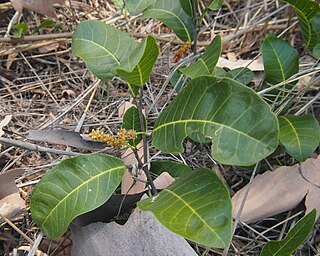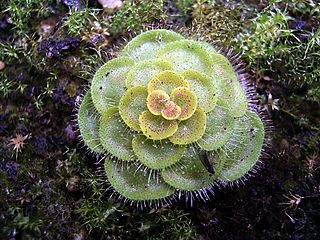| Diclinanona | |
|---|---|
| Scientific classification | |
| Kingdom: | Plantae |
| Clade: | Tracheophytes |
| Clade: | Angiosperms |
| Clade: | Magnoliids |
| Order: | Magnoliales |
| Family: | Annonaceae |
| Genus: | Diclinanona Diels |
Diclinanona is a genus of plants in the family Annonaceae.
| Diclinanona | |
|---|---|
| Scientific classification | |
| Kingdom: | Plantae |
| Clade: | Tracheophytes |
| Clade: | Angiosperms |
| Clade: | Magnoliids |
| Order: | Magnoliales |
| Family: | Annonaceae |
| Genus: | Diclinanona Diels |
Diclinanona is a genus of plants in the family Annonaceae.
Diclinanona are small trees with flowers. Each flower has 6 petals, which have numerous stamens. [1]
Diclinanona comprises three species distributed in Brazil, Colombia, Peru and Venezuela: [2]

Buddleja is a genus comprising over 140 species of flowering plants endemic to Asia, Africa, and the Americas. The generic name bestowed by Linnaeus posthumously honoured the Reverend Adam Buddle (1662–1715), an English botanist and rector, at the suggestion of Dr. William Houstoun. Houstoun sent the first plants to become known to science as buddleja to England from the Caribbean about 15 years after Buddle's death. Buddleja species, especially Buddleja davidii and interspecific hybrids, are commonly known as butterfly bushes and are frequently cultivated as garden shrubs. Buddleja davidii has become an invasive species in both Europe and North America.

Idiospermum is a monotypic genus in the family Calycanthaceae. The sole included species is Idiospermum australiense − commonly known as idiotfruit, ribbonwood, or dinosaur tree − which is found only in two small areas of the tropical rainforests of northeastern Queensland, Australia. It is a relic of the ancient forests of Gondwana, surviving in very localised refugia for 120 million years, and displaying features that are almost identical to fossil records from that time. As such it provides an important insight into the very early evolution of flowering plants.

Menispermaceae is a family of flowering plants. The alkaloid tubocurarine, a neuromuscular blocker and the active ingredient in the 'tube curare' form of the dart poison curare, is derived from the South American liana Chondrodendron tomentosum. Several other South American genera belonging to the family have been used to prepare the 'pot' and 'calabash' forms of curare. The family contains 68 genera with some 440 species, which are distributed throughout low-lying tropical areas with some species present in temperate and arid regions.

Abuta is a genus in the flowering plant family Menispermaceae, of about 32 species, native to tropical Central and South America.

Trophis is a genus in the plant family Moraceae which includes about nine species, six of which are Neotropical and three which are Palaeotropical. It is dioecious, with male and female flowers borne on separate plants.

Friedrich Ludwig Emil Diels was a German botanist.

Drosera zonaria, the painted sundew, is a perennial tuberous species in the carnivorous plant genus Drosera and is endemic to south-west Western Australia from near Perth southeast to near Esperance. It grows in a tight rosette approximately 5 to 7 cm in diameter with 20 to 30 green to red leaves that are arranged in concentric layers. The leaves are typically 1 cm wide and are usually described as being "kidney-shaped" with crimson leaf margins. It grows in deep silica sands in open woodland or coastal heathland and only flowers after a bush fire, which is speculated to be caused by the release of ethylene. Its white, sweetly perfumed flowers, which are very similar to those of D. erythrorhiza, emerge on 4 to 5 cm tall scapes. As with most other tuberous Drosera species, D. zonaria will die back during the dry summer months and retreat to the fleshy tuber 10 to 30 cm below ground.

Artabotrys is a genus of plants in the Annonaceae family. There are over 100 species in the Old World tropics, with 31 species in Africa. It is part of the custard apple family (Annonaceae). All species are small trees or shrubs with a tendency to climb. Leaves are simple and alternate, without hairs. Bisexual flowers are borne singly or in clusters opposite the leaves. The 6-petalled flowers are scented, and the plant bears fleshy fruits.

Iris ser. Chinenses is a series of the genus Iris, in Iris subg. Limniris.

Iris series Spuriae are a series of the genus Iris, in Iris subg. Limniris. They are sometimes commonly known as butterfly irises.
Iris narcissiflora is a plant species in the genus Iris, it is also in the subgenus Iris and in the section Pseudoregelia. It is a rhizomatous perennial, from China. It has pale green, thin, sword-shaped leaves, medium-long slender stem and 1 yellow flower. It is cultivated as an ornamental plant in temperate regions.
Diclinanona calycina is a species of plant in the family Annonaceae. It is native to Brazil, Colombia, Peru and Venezuela. Ludwig Diels, the German botanist who first formally described the species using the basionym Xylopia calycina, named it after its well-developed calyx.

Huberantha is a genus of plants in the family Annonaceae and tribe Miliuseae. It is distributed in Australia, tropical Asia, East Africa and some Pacific islands. Tanawat Chaowasku named the genus "Huber's flowers" in honor of the German botanist Herbert Huber and to highlight its flowers as a distinguishing feature of the genus. A number of species have been moved here from the genus Polyalthia.
Meiocarpidium is a genus of plants in the family Annonaceae. It is distributed in Cameroon, The Central African Republic, The Republic of the Congo, and Gabon. Adolf Engler and Ludwig Diels, the German botanists who first formally described the genus, named it after the small number of carpels in the flowers.
Pseudoxandra leiophylla is a species of plant in the family Annonaceae. It is native to Brazil, Colombia, and Venezuela. Ludwig Diels, the German botanist who first formally described the species using the basionym Unonopsis leiophylla, named it after its smooth leaves.

Blennospora phlegmatocarpa is a herb species in the family Asteraceae. It is found in Western Australia.
Uvariopsis congensis is a species of plant in the Annonaceae family. It is native to Angola, Cameroon, the Central African Republic, the Democratic Republic of the Congo, Gabon, Ivory Coast, Kenya, Sudan, Uganda, Zambia. Walter Robyns and Jean Ghesquière, the botanists who first formally described the species, named it after the Belgian Congo, now called the Democratic Republic of the Congo, where the specimen they examined was collected in the town of Kisantu near the Inkisi River.
Xylopia cuspidata is a species of plant in the Annonaceae family. It is native to Bolivia, Brazil, Colombia, Ecuador and Peru. Ludwig Diels, the botanist who first formally described the species, named it after the leaves which have an abruptly pointed tip.